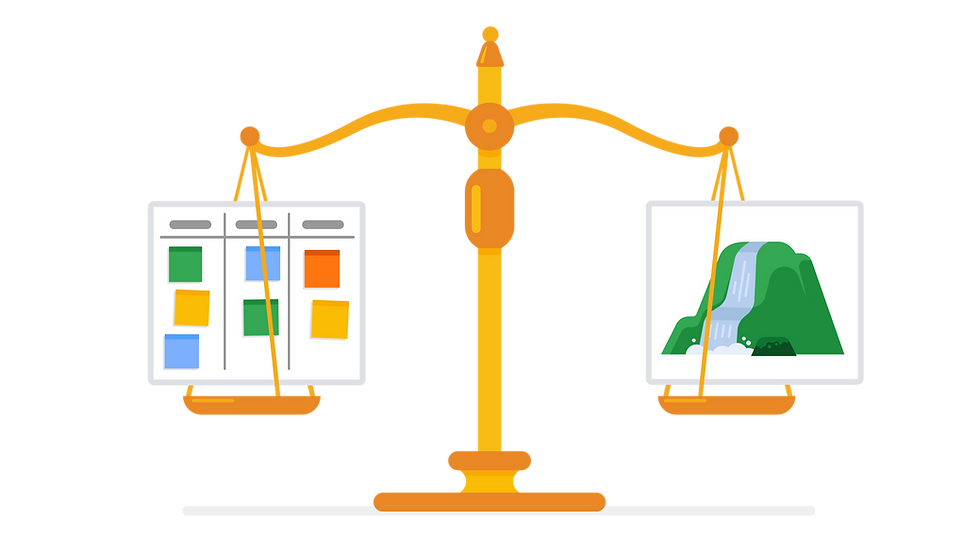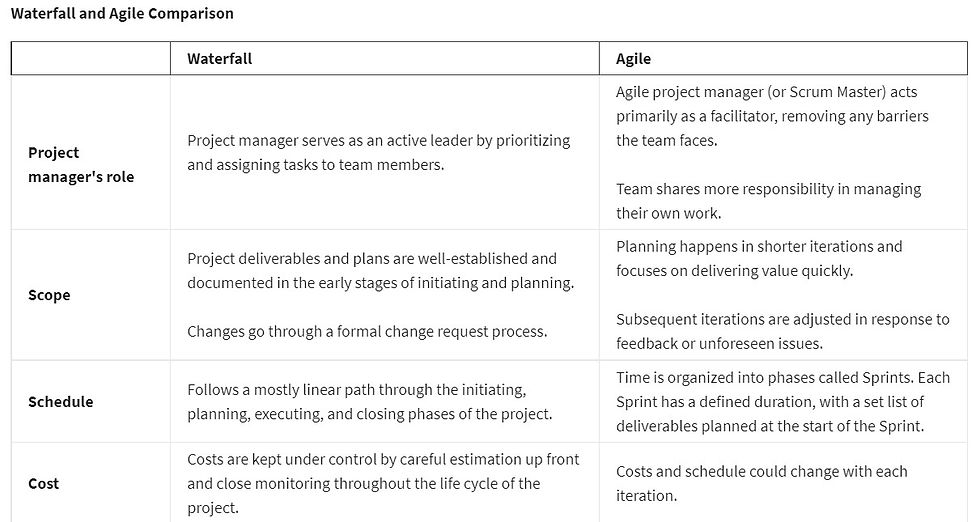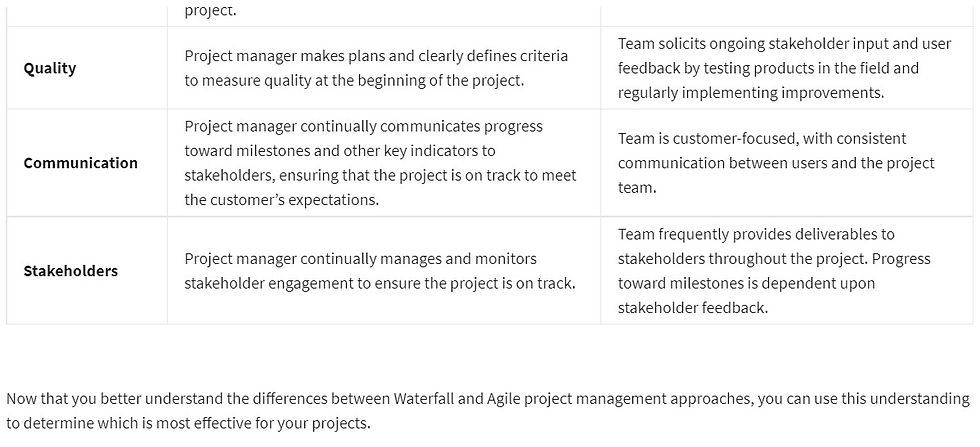Comparing Waterfall and Agile approaches
- Svetlana Gubaydullina
- Jan 20, 2022
- 2 min read
Comparing Waterfall and Agile approaches
Now that you know more about some of the different approaches and frameworks associated with project management, let's compare specific aspects of Waterfall (also commonly called traditional) and Agile approaches.

Understanding the fundamentals of—and differences between—these common project management approaches can help you demonstrate your project management knowledge during an interview. It can also help you evaluate a project to determine the right approach when working on the job.
Waterfall and Agile are implemented in many different ways on many different projects, and some projects may use aspects of each. The chart below briefly describes and compares Waterfall and Agile approaches. You can use it as a quick reference tool, but be aware that in practice, the differences between these two approaches may not always be clearly defined. Waterfall and Agile Comparison
Waterfall
Agile
Project manager's role
Project manager serves as an active leader by prioritizing and assigning tasks to team members.
Agile project manager (or Scrum Master) acts primarily as a facilitator, removing any barriers the team faces. Team shares more responsibility in managing their own work.
Scope
Project deliverables and plans are well-established and documented in the early stages of initiating and planning. Changes go through a formal change request process.
Planning happens in shorter iterations and focuses on delivering value quickly. Subsequent iterations are adjusted in response to feedback or unforeseen issues.
Schedule
Follows a mostly linear path through the initiating, planning, executing, and closing phases of the project.
Time is organized into phases called Sprints. Each Sprint has a defined duration, with a set list of deliverables planned at the start of the Sprint.
Cost
Costs are kept under control by careful estimation up front and close monitoring throughout the life cycle of the project.
Costs and schedule could change with each iteration.
Quality
Project manager makes plans and clearly defines criteria to measure quality at the beginning of the project.
Team solicits ongoing stakeholder input and user feedback by testing products in the field and regularly implementing improvements.
Communication
Project manager continually communicates progress toward milestones and other key indicators to stakeholders, ensuring that the project is on track to meet the customer’s expectations.
Team is customer-focused, with consistent communication between users and the project team.
Stakeholders
Project manager continually manages and monitors stakeholder engagement to ensure the project is on track.
Team frequently provides deliverables to stakeholders throughout the project. Progress toward milestones is dependent upon stakeholder feedback.
Now that you better understand the differences between Waterfall and Agile project management approaches, you can use this understanding to determine which is most effective for your projects.



Comments